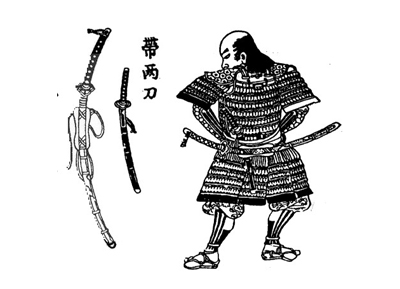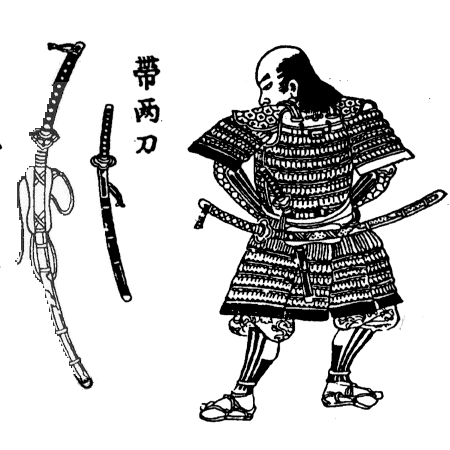
Warlike, hereditary and highly class-structured, Japan was ancient well before other civilizations rose and fell. The shogun, its warrior class, kept the peace with mostly one weapon, the samurai sword, which was so perfect in design that it defined a society for nearly a thousand years. Of those swords, the katana would be the one most identified with this ancient Japanese culture.
The History
“Japanese swords have always been more than just weapons,” says Business Insider’s video titled Why Japanese Swords are so Expensive. “They were artworks, status symbols … and held a huge spiritual importance … [with] the power to … dispel evil,” the video continues.
Each handcrafted katana is unique. Its maker can be identified by his distinctive style, like a painting can be attributed to a particular artist. The kind of steel used, how it is forged, the type of blade, and the work of the sword polisher combined to form the unique signature that identifies the swordsmith and the period in which it was made.

The Steel
A hardened steel called tamahagane makes the ancient katana special. Derived from very pure iron sand in Shimane, Japan, and mixed with pure carbon, it is smelted to remove impurities until the carbon content reaches no less than 0.5% to 0.7%. The increased level of carbon and higher oxygen content imparts strength when hammered and folded in several layers.
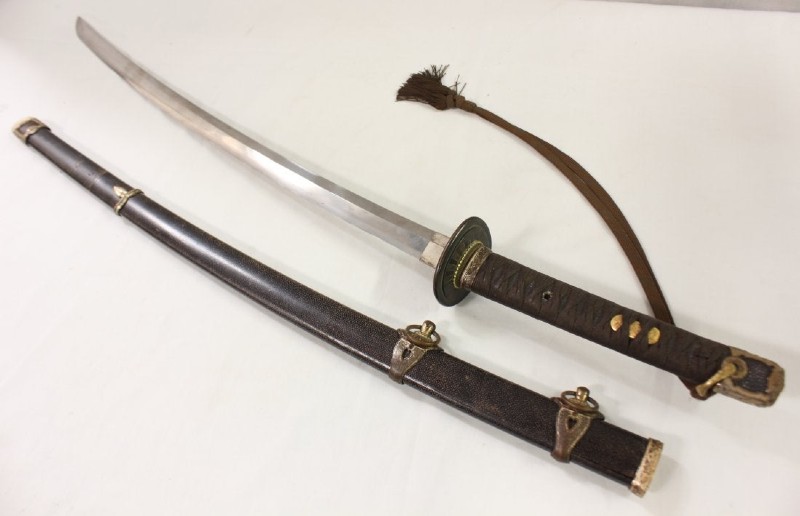
The Forging
Creating a katana requires skill and mastery of a time-honored forging process developed over centuries. Legend has it that this process of differential hardening, or tsuchioki, was developed by Amakuni Yasutsuna in the 8th century. Tsuchioki strengthens swords significantly, thus ensuring they will not shatter in combat. The method requires that swordsmiths expertly fold dozens of layers of carbonized iron (about 5,000 layers per centimeter), using a combination of wet slurry of clay, water, ash, stone powder and rust. As the slurry is folded, it is continuously heated past 750° C (1,352° F) until the desired carbon content is reached.
Over weeks, the forging process changes the iron content to austenite, which, when quickly cooled with water, then changes to martensite, the hardest steel intended for the cutting edge. When the same iron is cooled slowly, the steel becomes a softer metal, pearlite, which is shaped near the interior and blunt edge of the blade, making the sword more flexible. Between the two is a distinctive insulation or temper line known as the hamon, a unique “signature” formed by the sword polisher.
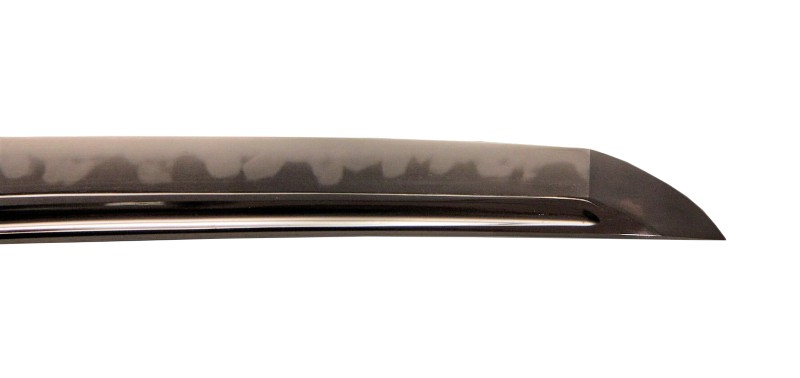
The Blade
Besides its size, coloration and other final adornments, katana will be specifically identified by its blade type, particularly the tip of the sword itself. Shinogi-Zukuri features a yokote, which a Wikipedia entry describes as “… a line or bevel that separates the finish of the main blade and the finish of the tip.” A Shobu-Zukuri blade has smooth edges that form seamlessly with the tip. The Kissaki-Moroha-Zukuri is a double-edged sharp curved blade that is completely symmetrical in design, unlike other blades with only one sharpened edge.
The Polishing
Once the blade has been forged, the sword polisher creates the blade’s hardness using a method that also forms the unique blade pattern, the aforementioned hamon. Through a process called glazing, clay and charcoal are painstakingly painted on with careful brushstrokes. The harder martensitic steel at the sword’s cutting edge is formed once the softer pearlitic steel is gradually polished away, leaving the unique temper pattern and sharpness near the sword’s edge. This process takes weeks to achieve.
Traditional katana and more modern monosteel swords can be easily distinguished by the nioi along the beveled edge of the hamon, where it separates from the mirrored blunt edge of the sword. Described by a swordsmith, nioi are the “‘glittering grains that look like scattered stars,” something that cannot be reproduced through modern acid etching, wire brushing or even sandblasting. It is a unique signature of the sword polisher.
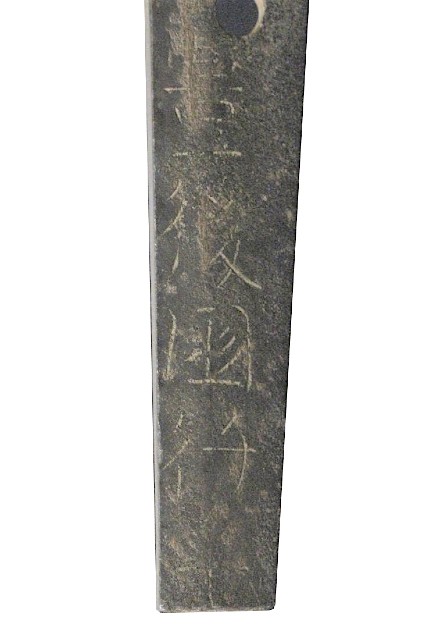
The Historical and the Ceremonial
The ancient samurai, the warrior class of feudal Japan, used tachi — swords made for individual combat — from about the year 900 to the late 16th century. Starting about 1596, katana could be distinguished from tachi, in that the cutting blade on katana were worn by samurai with the blade side down. The tachi was longer, about 70 to 80 cm, lighter, and had more of a curved blade. It was also apt to break more frequently during close-quarters combat.
Katana blades, on the other hand, were worn blade side up to give the samurai a greater edge in close combat using one stroke upward from the hilt instead of the tachi use of two strokes. It is less curved than tachi, only about 60 cm or so long depending on the period, and usually single-edged. The blade is highly strengthened through its unique differential hardening and its signature hamon, making it less likely to shatter in combat.
Ceremonial katana (shōwatō) are usually forged in untraditional ways and utilize more-modern methods of production, such as the use of industrialized power hammers rather than pounding and layering the steel by hand. Quenching each layer with oil instead of water and the use of more readily available commercial steel makes a noticeable difference in quality and presentation.
The line of demarcation between ceremonial and “true” historical Japanese katana is generally considered to have been 1876. By 1937, Japan was hallmarking “new” katana with a special nakago stamp on the tang, the steel shank formed into the handle.
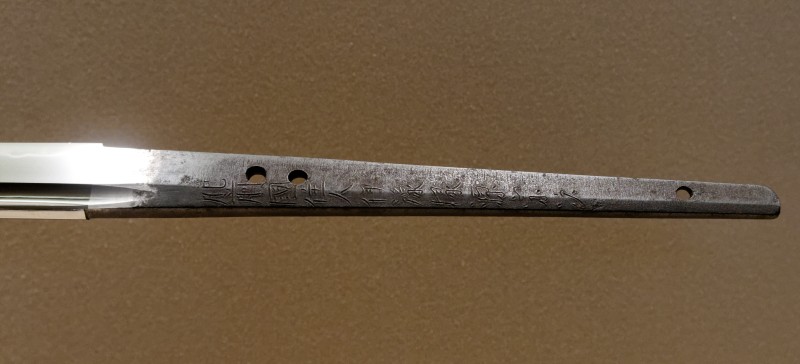
What To Look For
“Knowing what to look for in each sword is important,” the video continues. “Characteristics like the angle and the length of the blade or the way the metal is folded could give away the era in which it was made and even who made it.” The point of the blade where the skills of the swordsmith and the sword polisher meet distinguishes the quality of their art and passion.
Edges are important, too. The pattern and flow of the hamon will reveal whether katana is considered historical or ceremonial. This is where the katana “‘speaks” to you with different patterns for different historical periods, whether antique or reproductions.
The tang (nakago) is the handle of the sword itself. It is the one piece that is not polished and is left to rust under the menuki (the grip) of the sword. A katana signed by the swordsmith indicates a rare find.
Katana that are complete with their koshirae — all the ceremonial or original wrappings of carefully applied silk, textiles, leather and hanging cords around the guards, collars, hilt and scabbard — are always in demand at auction.
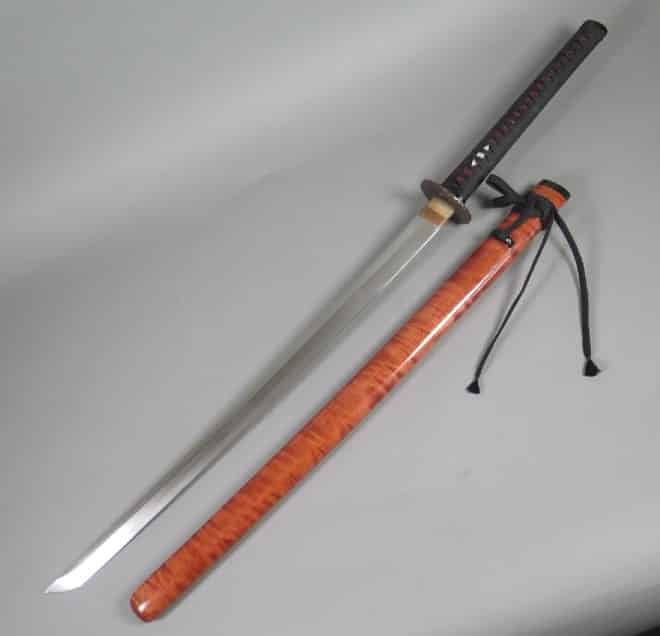
In the end, every katana, whether historical or ceremonial, is more than a piece of art. It can be compared to a painting, an elaborate ceramic bowl or highly polished and detailed sculpture. With each hammer strike, the katana imbues centuries of history that are as unique and spiritual as the swordsmith who created it.
It’s possible to feel bushido, the personal code of service, honor and dedication with every katana, whether historical or ceremonial. It is a spirit forged from the elements of fire and water that will remain relevant a thousand years from now.
# # #


